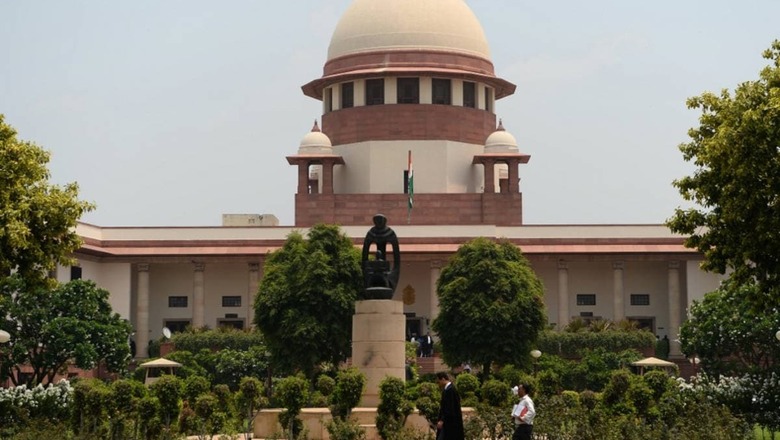
views
Felling of trees in the name of Lord Krishna cannot be allowed, the Supreme Court Wednesday orally said and asked Uttar Pradesh government to evaluate the plants proposed to be cut for its Krishna-Govardhan road project at Mathura. The evaluation has to be done not in terms of their timber value but by taking into account factors like their oxygen producing capacity, said the apex court.
A bench of Chief Justice S A Bobde and Justices A S Bopanna and V Ramasubramanian noted in the order that the state government was not in a position to make a statement as to how the Forest Department intended to evaluate the trees in question and granted four week time to the authorities to inform it about the method of evaluation it wanted to adopt. The state government and its authorities including the Public Works Department have filed an application seeking nod for felling of 2,940 trees for the Krishna-Govardhan road project at Mathura.
“You can’t fell thousands of trees that too in the name of Lord Krishna, the bench observed orally when a lawyer for the state PWD said that the project also included widening of a road leading to the temple at the birthplace of Lord Krishna at Mathura. Clearly they cannot do so (evaluation) in terms of the timber but must adopt a method of evaluation which takes into account the oxygen producing capacity of a particular tree over its remaining life span, assuming that it may be cut now,” the bench said.
It took note of the statement of lawyer A D N Rao, assisting it as an amicus curiae, that there was a system of evaluation called Net Present Value (NPV) which takes note of the oxygen producing capacity of a plant also The State of Uttar Pradesh is expected to look at the NPV method of evaluation also. In any case, at the request of Aishwarya Bhati, ASG, we adjourn the matter(s) for a period of four weeks so that the State of Uttar Pradesh may inform the court about the method of evaluation it intends to adopt, it said in the order.
It also said the state government may also consider the reduction in the number of trees proposed to be fell for the purposes of building the road. It is to be kept in mind that the only effect that is likely to arise if the trees are retained would be that the roads may not be straight and therefore, not capable of accommodating high speed traffic. Such an effect may not necessary be deleterious particularly since high speed on the highways is known to cause serious accidents and cause of innumerable deaths on Indian roads, the order said.
At the outset of the hearing of a PIL, filed by environmentalist M C Mehta on protection of Taj Mahal and several applications, the bench asked state government as to how many trees it proposed to cut for its project and on being told that several banyan and neem trees were to be felled, it reacted sharply. Why cannot the road take a turn around the tree. That will only mean that speed will be slow. If the speed is slow, it will lower accidents and will be more safer, the bench said.
The bench suggested that instead of cutting trees, roads may be built in a zig-zag manner which will reduce the traffic speed and accidents as well. The bench said that it was not possible for it to accept a compensation in merely arithmetical terms particularly since there is no statement forthcoming from the State of Uttar Pradesh or the PWD as to the nature of the trees that is to say whether they are classified as shrubs or large trees. Moreover, there is no information available to us regarding the age of the trees since it is obvious that there cannot be compensatory reforestation if a sampling is planted after one hundred-year-old tree is cut down, it noted in the order.
It was not prima facie in agreement with the submission that the state authorities would undertake compensatory afforestation by planting the same trees at some other place in and around Mathura, which falls under the Taj trapezium zone. The tree loss will be compensated by afforestation and by payment to the tree fund of the forest department, a lawyer said. You want to cut 90-year old trees and plant a few week old saplings in lieu of that,the bench asked, adding that it was not satisfied with this submission.
“Living trees cannot be evaluated simply on the basis of timber value. Living trees give oxygen. That should be considered in valuation. Oxygen producing capacity of the tree must be evaluated over its remaining life span,” it said. The apex court’s nod is needed if any activity, having a repercussion on the flora and fauna of Taz trapezium zone, is proposed by the government authorities and private parties. Meanwhile, the top court granted M.C. Mehta three months’ time to undertake further visits and carry out sampling and analysis of major drains and water bodies and the proposed leather parks and also discuss with the local authorities so that the final report may be submitted before it.
Read all the Latest News, Breaking News and Coronavirus News here


















Comments
0 comment